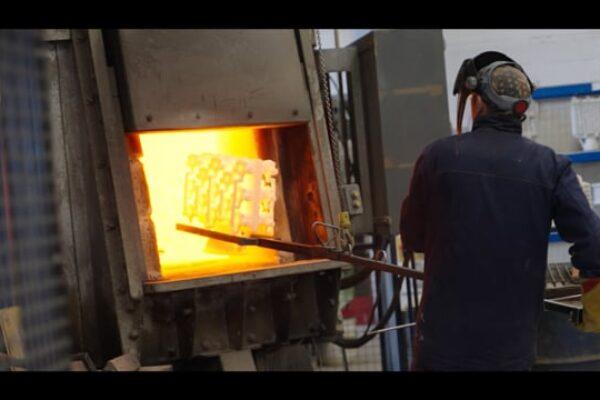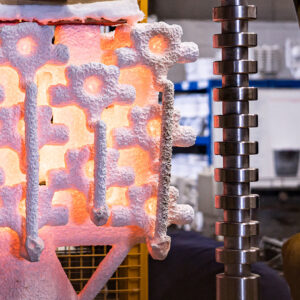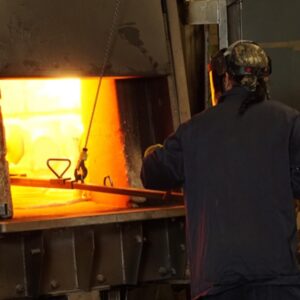The Investment Casting Process
Investacast uses the investment casting process to fabricate a variety of products and components, from small aluminium washers to explosion proof enclosures for oil rig CCTV systems. The advantages of this process include accuracy of design, integrity of cast, versatility of production and low-cost repeat runs.
This process, also known as lost wax casting, can be traced back nearly 5000 years with ancient societies using beeswax to cast everything from small pieces of jewellery to large statues. During the 20th Century the beeswax has been replaced with a more modern polymer, containing waxes that maintain good surface finishes and excellent dimensional stability.
Whilst the process itself is more expensive per unit than other manufacturing processes, it can produce parts in alloys that cannot be made by any other methods. It can also produce complicated shapes that would be very difficult or impossible to achieve with die casting, yet, like that process, it requires little surface finishing and only minor machining.
Advantages of Investment casting:
- It allows un-machinable parts to be cast near net shape
- It is ideal for low volume production
- It provides excellent dimensional accuracy
- It can be used to cast intricate forms with undercuts
- It achieves a smooth surface with no parting lines
- The low tooling set-up cost facilitates pre-production runs for high volume pressure die casting products
A brief summary of the investment casting process:
- Tool Making Process: a CAD designer creates 3D model of the tool from CAD data.
- Wax Making Process: the tool is used to create a wax pattern, using thermosetting wax injection moulding machines.
- Wax Assembly Process: the resulting sacrificial wax ‘pattern’ is attached to a ‘tree’ (essentially a central wax form)
- Ceramic Shelling Process: the wax assembly is coated in liquid ceramic slurry, and then a dry ceramic granular layer (stucco) is attached and dried in environmentally controlled conditions, a process that is repeated until the investment reaches the required thickness.
- Dewaxing Process: the ceramic shell is finally dried then steam dewaxed to remove the wax.
- Shell firing: the dewaxed ceramic shell is fired at high temperature to sinter and improve the mechanical strength.
- Casting Process: the shell is filled with molten metal (a range of metals including stainless steel, brass, aluminium and carbon steel can be used in the process) using various techniques.
- Shell Removal: once cooled, the ceramic shell is mechanically removed to reveal the cast metal mould beneath.
- Finishing Process: metal castings are removed from the assembly by various cutting or plasma techniques. Once removed, the individual cast parts can be worked on individually.
- Inspection Process: once finished, the casting is inspected using various spectrographic analysis equipment and metrological techniques to establish conformance to drawing limits and specifications.
At Investacast, we can provide the complete solution to your casting needs.




